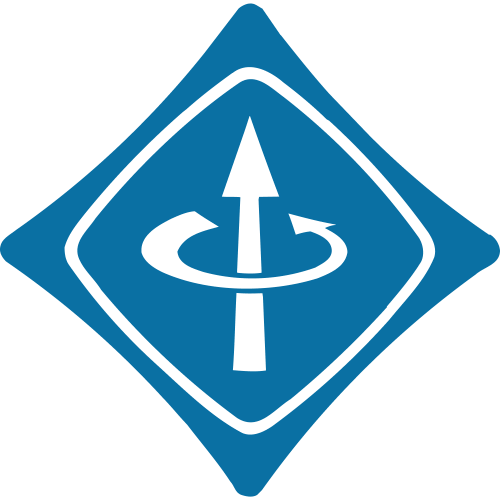Proceedings of the 9th International Conference on Information Communication and Management
What Number of Features is Optimal: A New Method Based on Approximation Function for Stance Detection Task
Publication type: Proceedings Article
Publication date: 2019-08-23
Journal:
Proceedings of the 9th International Conference on Information Communication and Management
Quartile SCImago
— Quartile WOS
—
Impact factor: —
ISSN:
Abstract
Selecting a text representation model faces a crucial problem of choosing an optimal number of features. The optimality criterion is the minimum number of features, which allows to achieve (or preserve) the maximum performance. The article suggests a new method of determining the optimal number of features, in which both components of the optimality criterion are taken into consideration. Using the proposed method, we first construct the dependence of task performance on the number of features, then the obtained dependence is approximated on the basis of Weibull distribution function, and the optimal number of features is determined by analyzing the growth rate of this function. We called this method DOFNAF (Determining the Optimal Feature Number by the Approximating Function). The proposed method is tested on stance detection task, consisting in identifying the position ("for" or "against"), which the author of the text supports towards the object (or objects) under discussion. The comparison involves constant methods, a method based on the function of the total number of features, a method of performance maximum, as well as Recursive Feature Elimination with Cross-Validation (RFECV) and Correlation-based Feature Selection (CFS) methods. The DOFNAF method allows to determine the minimum number of features compared with the existing methods and at the same time to maintain the classification performance.
Citations by journals
|
1
|
|
|
IEEE Access

|

IEEE Access
1 publication, 20%
|
|
Lecture Notes in Computer Science

|

Lecture Notes in Computer Science
1 publication, 20%
|
|
Neural Computing and Applications

|

Neural Computing and Applications
1 publication, 20%
|
|
Artificial Intelligence Review

|

Artificial Intelligence Review
1 publication, 20%
|
|
Programming and Computer Software

|

Programming and Computer Software
1 publication, 20%
|
|
1
|
Citations by publishers
|
1
2
3
|
|
|
Springer Nature

|

Springer Nature
3 publications, 60%
|
|
IEEE

|

IEEE
1 publication, 20%
|
|
Pleiades Publishing

|

Pleiades Publishing
1 publication, 20%
|
|
1
2
3
|
- We do not take into account publications that without a DOI.
- Statistics recalculated only for publications connected to researchers, organizations and labs registered on the platform.
- Statistics recalculated weekly.
{"yearsCitations":{"type":"bar","data":{"show":true,"labels":[2019,2020,2021,2022,2023],"ids":[0,0,0,0,0],"codes":[0,0,0,0,0],"imageUrls":["","","","",""],"datasets":[{"label":"Citations number","data":[1,1,2,0,1],"backgroundColor":["#3B82F6","#3B82F6","#3B82F6","#3B82F6","#3B82F6"],"percentage":["20","20","40",0,"20"],"barThickness":null}]},"options":{"indexAxis":"x","maintainAspectRatio":true,"scales":{"y":{"ticks":{"precision":0,"autoSkip":false,"font":{"family":"Montserrat"},"color":"#000000"}},"x":{"ticks":{"stepSize":1,"precision":0,"font":{"family":"Montserrat"},"color":"#000000"}}},"plugins":{"legend":{"position":"top","labels":{"font":{"family":"Montserrat"},"color":"#000000"}},"title":{"display":true,"text":"Citations per year","font":{"size":24,"family":"Montserrat","weight":600},"color":"#000000"}}}},"journals":{"type":"bar","data":{"show":true,"labels":["IEEE Access","Lecture Notes in Computer Science","Neural Computing and Applications","Artificial Intelligence Review","Programming and Computer Software"],"ids":[25260,1022,5072,4329,7458],"codes":[0,0,0,0,0],"imageUrls":["\/storage\/images\/resized\/6scCJegesojp2jubwY3uKCzTAmgsaH2GIFlg6Hfk_medium.webp","\/storage\/images\/resized\/voXLqlsvTwv5p3iMQ8Dhs95nqB4AXOG7Taj7G4ra_medium.webp","\/storage\/images\/resized\/voXLqlsvTwv5p3iMQ8Dhs95nqB4AXOG7Taj7G4ra_medium.webp","\/storage\/images\/resized\/voXLqlsvTwv5p3iMQ8Dhs95nqB4AXOG7Taj7G4ra_medium.webp","\/storage\/images\/resized\/oZgeErrVFhuDksyqFURLvYS1wtVSBWczh001igGo_medium.webp"],"datasets":[{"label":"","data":[1,1,1,1,1],"backgroundColor":["#3B82F6","#3B82F6","#3B82F6","#3B82F6","#3B82F6"],"percentage":[20,20,20,20,20],"barThickness":13}]},"options":{"indexAxis":"y","maintainAspectRatio":false,"scales":{"y":{"ticks":{"precision":0,"autoSkip":false,"font":{"family":"Montserrat"},"color":"#000000"}},"x":{"ticks":{"stepSize":null,"precision":0,"font":{"family":"Montserrat"},"color":"#000000"}}},"plugins":{"legend":{"position":"top","labels":{"font":{"family":"Montserrat"},"color":"#000000"}},"title":{"display":true,"text":"Journals","font":{"size":24,"family":"Montserrat","weight":600},"color":"#000000"}}}},"publishers":{"type":"bar","data":{"show":true,"labels":["Springer Nature","IEEE","Pleiades Publishing"],"ids":[8,6953,101],"codes":[0,0,0],"imageUrls":["\/storage\/images\/resized\/voXLqlsvTwv5p3iMQ8Dhs95nqB4AXOG7Taj7G4ra_medium.webp","\/storage\/images\/resized\/6scCJegesojp2jubwY3uKCzTAmgsaH2GIFlg6Hfk_medium.webp","\/storage\/images\/resized\/oZgeErrVFhuDksyqFURLvYS1wtVSBWczh001igGo_medium.webp"],"datasets":[{"label":"","data":[3,1,1],"backgroundColor":["#3B82F6","#3B82F6","#3B82F6"],"percentage":[60,20,20],"barThickness":13}]},"options":{"indexAxis":"y","maintainAspectRatio":false,"scales":{"y":{"ticks":{"precision":0,"autoSkip":false,"font":{"family":"Montserrat"},"color":"#000000"}},"x":{"ticks":{"stepSize":null,"precision":0,"font":{"family":"Montserrat"},"color":"#000000"}}},"plugins":{"legend":{"position":"top","labels":{"font":{"family":"Montserrat"},"color":"#000000"}},"title":{"display":true,"text":"Publishers","font":{"size":24,"family":"Montserrat","weight":600},"color":"#000000"}}}}}
Metrics
Cite this
GOST |
RIS |
BibTex
Cite this
GOST
Copy
Vychegzhanin S., Razova E., Kotelnikov E. What Number of Features is Optimal: A New Method Based on Approximation Function for Stance Detection Task // Proceedings of the 9th International Conference on Information Communication and Management. 2019.
GOST all authors (up to 50)
Copy
Vychegzhanin S., Razova E., Kotelnikov E. What Number of Features is Optimal: A New Method Based on Approximation Function for Stance Detection Task // Proceedings of the 9th International Conference on Information Communication and Management. 2019.
Cite this
RIS
Copy
TY - CPAPER
DO - 10.1145/3357419.3357430
UR - https://doi.org/10.1145%2F3357419.3357430
TI - What Number of Features is Optimal: A New Method Based on Approximation Function for Stance Detection Task
T2 - Proceedings of the 9th International Conference on Information Communication and Management
AU - Vychegzhanin, Sergey
AU - Razova, Elena
AU - Kotelnikov, Evgeny
PY - 2019
DA - 2019/08/23 00:00:00
PB - Association for Computing Machinery (ACM)
ER -
Cite this
BibTex
Copy
@inproceedings{2019_Vychegzhanin,
author = {Sergey Vychegzhanin and Elena Razova and Evgeny Kotelnikov},
title = {What Number of Features is Optimal: A New Method Based on Approximation Function for Stance Detection Task},
year = {2019},
month = {aug},
publisher = {Association for Computing Machinery (ACM)}
}
